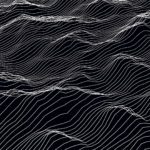Q&A with Jesse Hildebrand
 For Jesse Hildebrand making science accessible and exciting is at the core of everything he does. Jesse is the VP of Education at Exploring By The Seat of Your Pants, a digital education non-profit that connects scientists and explorers worldwide through free interactive broadcasts. He’s also the coordinator of the BackyardBio global nature campaign and the founder of Science Literacy Week, Canada’s largest science festival. A lover of nature and bringing people together for the common good, he sees the value in visualizing science in creative and interactive ways.
For Jesse Hildebrand making science accessible and exciting is at the core of everything he does. Jesse is the VP of Education at Exploring By The Seat of Your Pants, a digital education non-profit that connects scientists and explorers worldwide through free interactive broadcasts. He’s also the coordinator of the BackyardBio global nature campaign and the founder of Science Literacy Week, Canada’s largest science festival. A lover of nature and bringing people together for the common good, he sees the value in visualizing science in creative and interactive ways.
Jesse will be judging the From the Field category for the 2021 Visualizing Science Contest.
What inspires you to create outreach initiatives like Science Literacy Week?
I fell in love with nature and science as a young boy through the relentless passion of Steve Irwin through the Crocodile Hunter TV show, and knew even by [age] four that there was no better job than “science communicator”. It’s as much a marvel to me now as it was then that you can make a living just sharing how wildly enthusiastic you are about the world around us—and so what a gift and joy to be able to come up with ideas like Science Literacy Week, which might enable more people to be drawn in by all the wonders of the world!
In all the work that you do, there is a notable creative component. How do you think incorporating creativity into science could change the public and the research community’s relationship with science?
My experience learning science in school was never really positive. Rote memorization and facts and figures simply don’t inspire the way that art, music, and other creative approaches to scientific storytelling can. Everyone is a little different in what appeals to them, and so scientific education should (and does more now than ever!) recognize that, by conveying these grand stories in as many diverse ways as possible. Think of your own favourite idea or concept you’ve ever learned and how it stuck with you—my bet is it came about through a fantastic teacher or a unique approach to sharing it with you rather than a textbook!
What do you think is the most important thing a researcher should consider when creating a scientific visualization?
To think of their audience. Jargon and detailed knowledge can serve to instantly alienate people who might otherwise be inspired and excited by concepts! Start with the feeling you’re trying to convey, maybe the feeling you have yourself as a scientist, and work from that feeling to create something that will foster that same emotional response in others!




